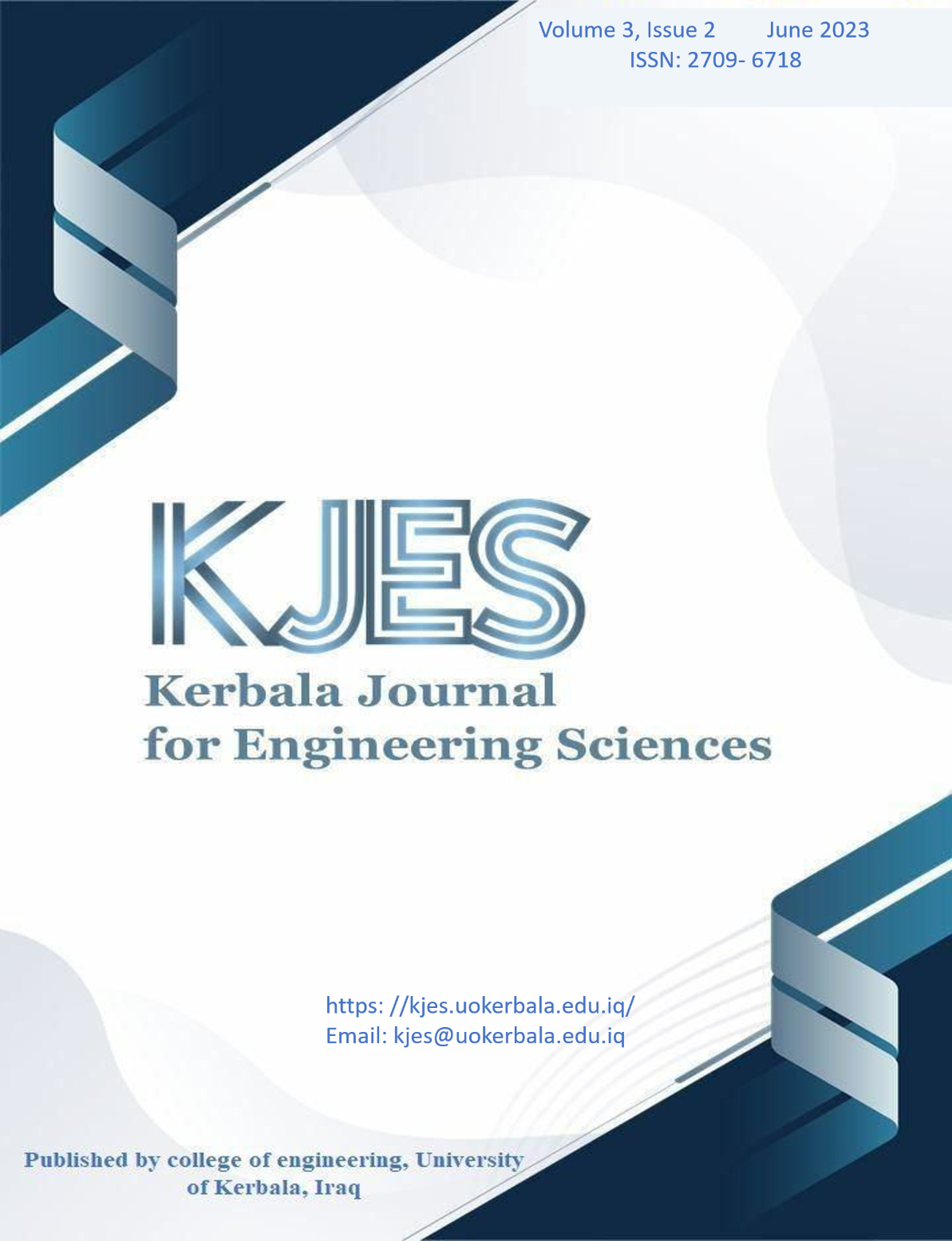Abstract
The paving industry within the last century has developed extensively, mainly two paving
technologies have targeted in this development, namely: flexible and rigid pavements. Although
such technologies’ development is deeply enhanced, they still have unsolved shortcomings.
Therefore, pavement researchers and engineers suggested benefiting from these two technology
advantages by gathering them in a new technology called semi-flexible paving (SFP) to overcome
the pointed shortcoming. The structural composition of SFP consists of porous asphalt, which
contains air voids (25-35) % that inject with cementitious grout materials. As a result, the SFP
surface course combines the pre-eminent qualities of bituminous pavements (flexible) and concrete
(rigid). Serving the literature disclosed that the SFP has a very high resistance to the effect of traffic
loads and weather conditions compared to conventional hot mix asphalt (HMA). Previous studies
have shown that it can be applied in places with heavy traffic, i.e. heavy and slow traffic, for
example, industrial areas, harbors, warehouses, distribution centers, road crossing, bus terminals,
parking areas with heavy traffic, cargo centers, airports pavements, etc. Therefore, under
uncontrolled high axle loads and extreme high summer and low winter ambient temperatures, SFP
represents a suitable and achievable technique.
technologies have targeted in this development, namely: flexible and rigid pavements. Although
such technologies’ development is deeply enhanced, they still have unsolved shortcomings.
Therefore, pavement researchers and engineers suggested benefiting from these two technology
advantages by gathering them in a new technology called semi-flexible paving (SFP) to overcome
the pointed shortcoming. The structural composition of SFP consists of porous asphalt, which
contains air voids (25-35) % that inject with cementitious grout materials. As a result, the SFP
surface course combines the pre-eminent qualities of bituminous pavements (flexible) and concrete
(rigid). Serving the literature disclosed that the SFP has a very high resistance to the effect of traffic
loads and weather conditions compared to conventional hot mix asphalt (HMA). Previous studies
have shown that it can be applied in places with heavy traffic, i.e. heavy and slow traffic, for
example, industrial areas, harbors, warehouses, distribution centers, road crossing, bus terminals,
parking areas with heavy traffic, cargo centers, airports pavements, etc. Therefore, under
uncontrolled high axle loads and extreme high summer and low winter ambient temperatures, SFP
represents a suitable and achievable technique.
Keywords
Cementitious grout
flowability
high trafficked highway
porous asphalt
semi-flexible pavement.
Abstract
لقد تطورت صناعة الرصف خلال القرن الماضي على نطاق واسع، وقد استهدفت بشكل رئيسي تقنيتين للرصف في هذا التطور، وهما: الرصف المرن والصلب. وعلى الرغم من تعزيز تطوير هذه التقنيات بشكل كبير، إلا أنها لا تزال تعاني من أوجه قصور لم يتم حلها.
لذلك، اقترح باحثو ومهندسو الرصف الاستفادة من هاتين الميزتين التكنولوجيتين من خلال جمعهما في تقنية جديدة تسمى الرصف شبه المرن (SFP) للتغلب على
القصور الواضح. يتكون التركيب الهيكلي لـ SFP من الأسفلت المسامي، والذي يحتوي على فراغات هوائية (25-35)٪ يتم حقنها بمواد الجص الأسمنتية. ونتيجة لذلك، يجمع سطح SFP بين الصفات البارزة للأرصفة البيتومينية (المرنة) والخرسانة (الصلبة). وقد كشفت خدمة الأدبيات أن SFP يتمتع بمقاومة عالية جدًا لتأثير أحمال المرور وظروف الطقس مقارنة بالإسفلت الساخن التقليدي (HMA). وقد أظهرت الدراسات السابقة أنه يمكن تطبيقها في الأماكن ذات حركة المرور الكثيفة، أي حركة المرور الكثيفة والبطيئة، على سبيل المثال، المناطق الصناعية والموانئ والمستودعات ومراكز التوزيع ومعابر الطرق ومحطات الحافلات ومناطق وقوف السيارات ذات حركة المرور الكثيفة ومراكز الشحن وأرصفة المطارات وما إلى ذلك. لذلك، في ظل الأحمال المحورية العالية غير الخاضعة للرقابة ودرجات الحرارة المحيطة المرتفعة للغاية في الصيف والمنخفضة في الشتاء، يمثل SFP تقنية مناسبة وقابلة للتحقيق.
لذلك، اقترح باحثو ومهندسو الرصف الاستفادة من هاتين الميزتين التكنولوجيتين من خلال جمعهما في تقنية جديدة تسمى الرصف شبه المرن (SFP) للتغلب على
القصور الواضح. يتكون التركيب الهيكلي لـ SFP من الأسفلت المسامي، والذي يحتوي على فراغات هوائية (25-35)٪ يتم حقنها بمواد الجص الأسمنتية. ونتيجة لذلك، يجمع سطح SFP بين الصفات البارزة للأرصفة البيتومينية (المرنة) والخرسانة (الصلبة). وقد كشفت خدمة الأدبيات أن SFP يتمتع بمقاومة عالية جدًا لتأثير أحمال المرور وظروف الطقس مقارنة بالإسفلت الساخن التقليدي (HMA). وقد أظهرت الدراسات السابقة أنه يمكن تطبيقها في الأماكن ذات حركة المرور الكثيفة، أي حركة المرور الكثيفة والبطيئة، على سبيل المثال، المناطق الصناعية والموانئ والمستودعات ومراكز التوزيع ومعابر الطرق ومحطات الحافلات ومناطق وقوف السيارات ذات حركة المرور الكثيفة ومراكز الشحن وأرصفة المطارات وما إلى ذلك. لذلك، في ظل الأحمال المحورية العالية غير الخاضعة للرقابة ودرجات الحرارة المحيطة المرتفعة للغاية في الصيف والمنخفضة في الشتاء، يمثل SFP تقنية مناسبة وقابلة للتحقيق.
Keywords
ملاط أسمنتي، سيولة، طريق سريع ذو حركة مرور عالية، أسفلت مسامي، رصف شبه مرن.
